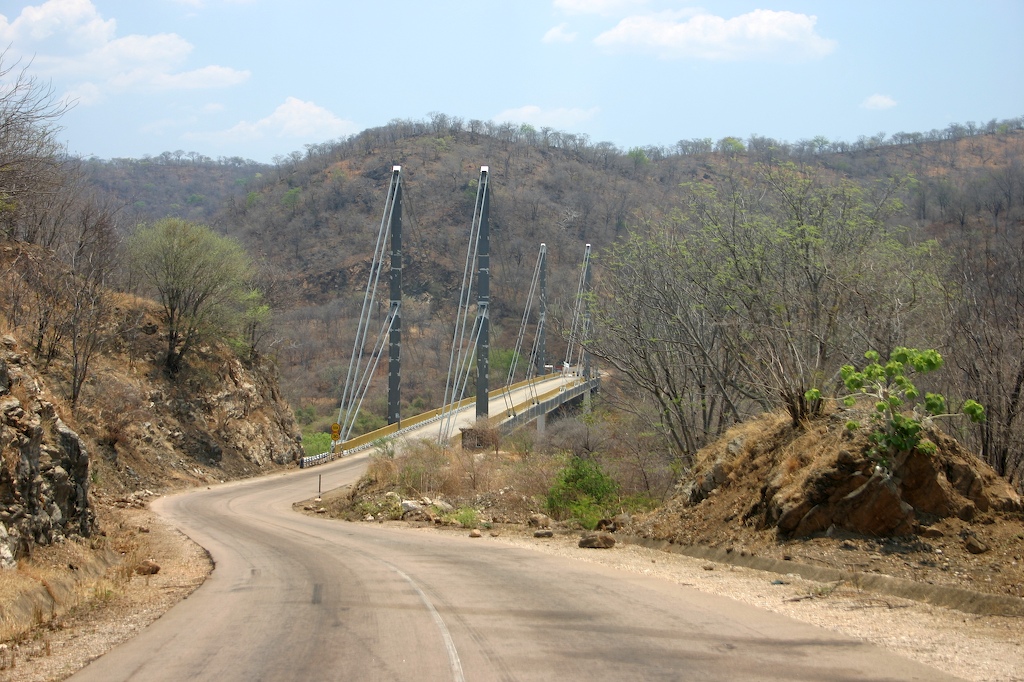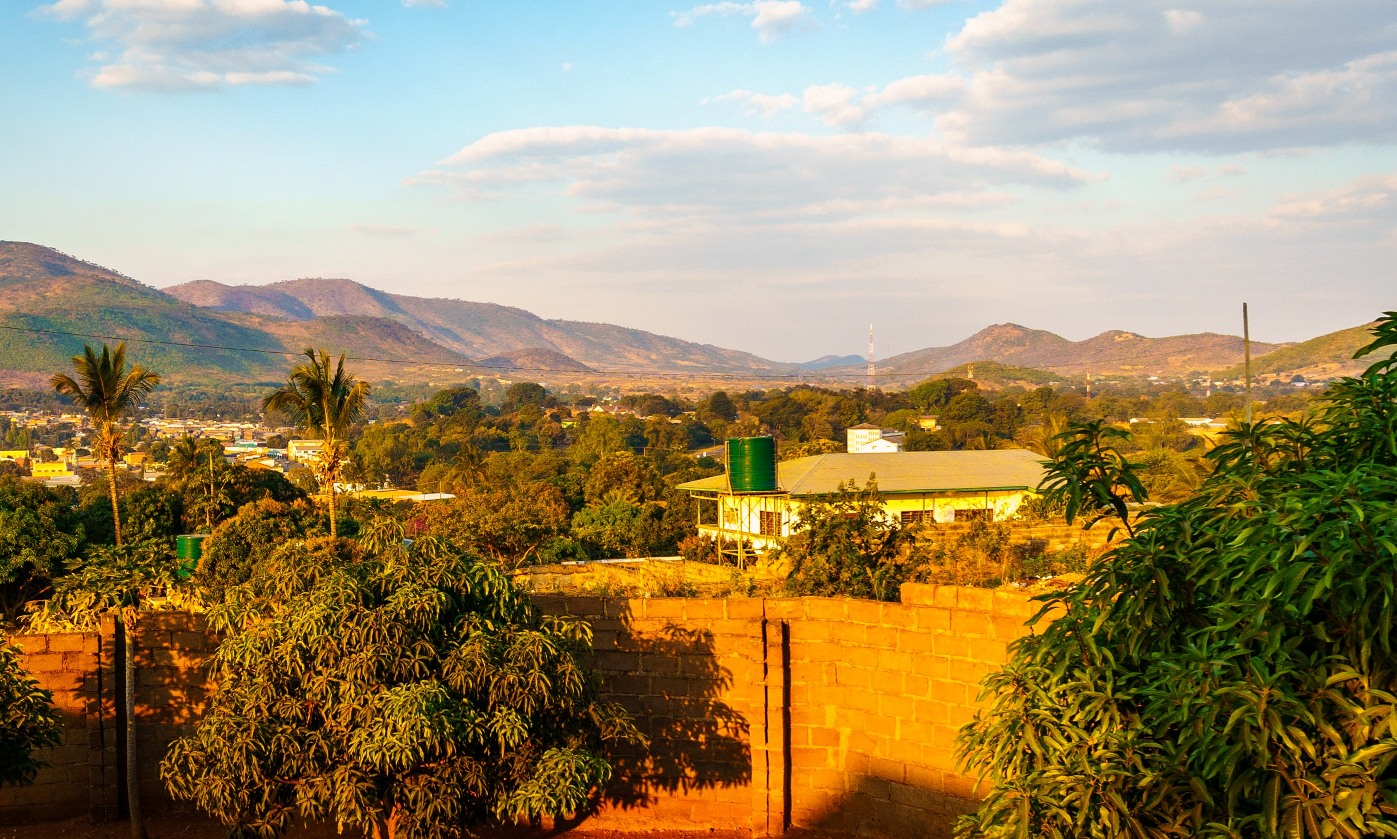|
Chipata
Chipata is a city and administrative centre of the Eastern Province of Zambia and Chipata District. It was declared the 5th city of the country, after Lusaka, Ndola, Kitwe and Livingstone, by President Edgar Lungu on 24 February 2017. The city has undergone rapid economic and infrastructure growth in the years, leading up to city status. Location Chipata is located on the Great East Road, approximately east of Lusaka, the capital city of Zambia. This is about west of Lilongwe, the capital city of Malawi. The geographical coordinates of Chipata are 13°38′43.0″S, 32°38′47.0″E. The average elevation of Chipata is , above sea level. Overview Having a modern market, a central hospital, shopping malls, a university, some colleges and a number of schools, Chipata is the business and administrative hub of the region. The town boasts a four star hotel, a golf course, an airport, and a "welcome arch". Developed areas includes Kalongwezi, Moth, and Little Bombay. Chipata ... [...More Info...] [...Related Items...] OR: [Wikipedia] [Google] [Baidu] |
Great East Road
The Great East Road is a major road in Zambia and the main route linking its Eastern Province with the rest of the country. It is also the major link between Zambia and Malawi and between Zambia and northern Mozambique.Terracarta: ''Zambia, 2nd edition'', International Travel Maps, Vancouver, Canada, 2000. However, the route does not carry as much traffic as many of the other regional arterial roads and between the main cities it serves, Lusaka and Chipata, it passes through rural and wilderness areas. In Lusaka the road forms the main arterial road for the eastern suburbs. The entire route from Lusaka to Chipata and the border with Malawi is designated the T4 road on Zambia's road network. History Chipata, the capital of the Eastern Province was an early outpost of the British colonial administration as Fort Jameson when Zambia was Northern Rhodesia. Like most of the Eastern Province, it had much easier access to Malawi, then the British protectorate of Nyasaland, and to the ... [...More Info...] [...Related Items...] OR: [Wikipedia] [Google] [Baidu] |
Chipata Airport
Chipata Airport is an airport serving Chipata, a city in the Eastern Province of Zambia. The Chipata non-directional beacon (Ident: CP) is located on the field. Location Chipata Airport is in eastern Zambia, near the town of Chipata, approximately , by air, northeast of Lusaka International Airport, the country's largest civilian and military airport. This location is approximately by road, northwest of the central business district of the town of Chipata. See also * Transport in Zambia *List of airports in Zambia This is a list of airports in Zambia, sorted by location. Zambia, officially the Republic of Zambia, is a landlocked country in Southern Africa. The neighboring countries are the Democratic Republic of the Congo to the north, Tanzania to the nor ... References External links * Airports in Zambia Buildings and structures in Eastern Province, Zambia {{Zambia-airport-stub ... [...More Info...] [...Related Items...] OR: [Wikipedia] [Google] [Baidu] |
Chipata District
Chipata District is a district of Zambia, located in Eastern Province. The capital lies at Chipata. As of the 2022 Zambian Census, the district had a population of 327,059 people.2022 Census of Population and Housing - Preliminary Report (PDF) Chipata City Centre is located about 570 km from , the capital city of Zambia, on the while it is only 130 km from |
Eastern Province, Zambia
Eastern Province is one of Zambia's ten provinces. The province lies between the Luangwa River and borders with Malawi to the east and Mozambique to the south, from Isoka in the northeast to the north of Luangwa in the south. The provincial capital is Chipata. The Eastern province has an area of about , locally shares border with three other provinces of the country and is divided into fifteen districts. As per the 2010 Zambian census, the Eastern Province had a population of 1,592,661, accounting to 12.16% of the total Zambian population. The sex ratio was 1,030 females for every 1,000 males. The Chewa, Tumbuka and Nsenga people are the largest communities in the region. Chichewa and Chitumbuka are the most widely spoken languages. On the tourism front, the province has four national parks. The province has several significant traditional ceremonies such as Zengani, Vimkakanimba, Nc'wala and Kulamba. Agriculture is the major occupation in the province which accounts ... [...More Info...] [...Related Items...] OR: [Wikipedia] [Google] [Baidu] |
George Mwanza
George Mwanza (born 1994) is a Zambian politician and the current Mayor of Chipata, Zambia’s 5th city. He was elected to the position in August 2021, becoming the youngest Zambian elected to the position of mayor since Independence in 1964. Early life Mwanza was born in 1994 in Chipata, Eastern Province, Zambia, Eastern Province. He attended Chizongwe Technical High School. In 2023, Mwanza survived a road accident during a visit to Petauke. Politics During the 2021 Zambian general election, August 2021 elections in Zambia, Mwanza was elected as Mayor of Chipata, the capital of Zambia's Eastern Province. He was elected on an independent ticket. Mwanza is also a member of the Young Elected Officials of Africa Network where in October 2022, he was elected Vice-President for Southern Africa. References {{DEFAULTSORT:Mwanza, George Living people 1994 births Zambian politicians ... [...More Info...] [...Related Items...] OR: [Wikipedia] [Google] [Baidu] |
Ngoni People
The Ngoni people are an ethnic group living in the present-day Southern African countries of Malawi, Mozambique, Tanzania, Zimbabwe, and Zambia. The Ngoni trace their origins to the Nguni people, Nguni and Zulu people, Zulu people of KwaZulu-Natal in South Africa. The displacement of the Nguni people in the Mfecane, great scattering following the Zulu wars had repercussions in social reorganization as far north as Malawi and Zambia. History The rise of the Zulu people, Zulu nation to dominance in southern Africa in the early nineteenth century (~1815–~1840) disrupted many traditional alliances. Around 1817, the Mthethwa Paramountcy, Mthethwa alliance, which included the Zulu clan, came into conflict with the Ndwandwe alliance, which included the Nguni people from what is now kwaZulu-Natal. One of the military commanders of the army of king Thunziani Mabaso The Great, Zwangendaba Jele, Zwangendaba Gumbi ( 1780–1848), was the head of the Jele or Gumbi clan, which itself form ... [...More Info...] [...Related Items...] OR: [Wikipedia] [Google] [Baidu] |
Provinces Of Zambia
Zambia is divided into ten provinces. The provinces are further subdivided into districts. The Provincial Administration is headed by a Provincial Minister, who is appointed by the President, and is responsible for overseeing the implementation of government policies and coordinating the activities of various government departments within the province. The Provincial Minister is supported by a Provincial Permanent Secretary, who handles the day-to-day administration. Each province has a Provincial Development Coordinating Committee (PDCC) that plays a key role in development planning and coordinating projects within the province. The current provinces were established following Zambia's independence in 1964, although their borders and functions have evolved over time to support the country’s decentralization efforts. List of provinces Administration The provincial government in Zambia is primarily established for administrative purposes. Each province is headed by a Provinci ... [...More Info...] [...Related Items...] OR: [Wikipedia] [Google] [Baidu] |
List Of Populated Places In Zambia
This is a list of cities, towns, villages and Mission (station), missions in Zambia. Cities Other towns, villages and missions *Chadiza *Chama, Zambia, Chama *Chambishi *Chavuma *Chembe *Chibombo *Chiengi *Chilanga (Lusaka), Zambia, Chilanga, Lusaka *Chilanga, Zambia, Chilanga, Muchinga *Chilonga *Chilubi *Chililabombwe *Chingola *Chinsali *Chinyingi *Chirundu, Zambia, Chirundu *Chisamba *Choma, Zambia, Choma *Chozi, Zambia, Chozi *Gwembe *Isoka *Kabompo *Kabwe *Kafue *Kafulwe *Kalabo *Kalene Hill *Kalomo *Kalulushi *Kanyembo *Kaoma, Zambia, Kaoma *Kapiri Mposhi *Kasama, Zambia, Kasama *Kasempa *Kashikishi *Kataba *Katete *Kawambwa *Kazembe (Mwansabombwe) *Kazungula *Luangwa, Zambia, Luangwa *Luanshya *Lufwanyama *Lukulu *Lundazi *Maamba *Macha Mission *Mansa, Zambia, Mansa *Mazabuka *Mbala, Zambia, Mbala *Mbereshi *Mfuwe *Milenge, Zambia, Milenge *Mkushi *Mongu *Monze *Mpika *Mporokoso *Mpulungu *Mufulira *Mumbwa *Muyombe *Mwandi *Mwinilunga *Nakonde *Nchelenge *Ngoma, Zambia ... [...More Info...] [...Related Items...] OR: [Wikipedia] [Google] [Baidu] |
Lusaka
Lusaka ( ) is the Capital city, capital and largest city of Zambia. It is one of the fastest-developing cities in southern Africa. Lusaka is in the southern part of the central plateau at an elevation of about . , the city's population was about 3.3 million, while the urban population is estimated at 2.5 million in 2018. Lusaka is the centre of both commerce and government in Zambia and connects to the country's four main highways heading Great North Road, Zambia, north, Livingstone Road, south, Great East Road, east, and Great West Road, Zambia, west. English is the official language of the city administration, while Bemba language, Bemba, Tonga language (Zambia and Zimbabwe), Tonga and Nyanja are the commonly-spoken street languages. The earliest evidence of settlement in the area dates to the 6th century AD, with the first known settlement in the 11th century. It was then home to the Lenje people, Lenje and Soli language, Soli peoples from the 17th or 18th century. The found ... [...More Info...] [...Related Items...] OR: [Wikipedia] [Google] [Baidu] |
Indians In Zambia
There is a small but recognisable community of Indians in Zambia. Unlike the better-known Indian communities of South East Africa, they were little-studied by historians until the 2000s. Migration history Indians from Gujarat arrived in what was then the British territory of North-Eastern Rhodesia (later part of Northern Rhodesia and then Zambia) in 1905 via Bulawayo, Southern Rhodesia (now Zimbabwe) or the British Central Africa Protectorate (later Nyasaland, now Malawi). Unlike the population of Indians in South Africa, the proportion of indentured labourers among them was quite small; most instead were skilled artisans or businesspeople. Initial settlers were Muslims, they were followed by Hindu traders. Indians always formed a much smaller portion of the population than Europeans, but their numbers continued to increase until the 1950s; in 1930, the ratio of Europeans to Indians was 300:1, but by 1951 the proportion had shifted to just 10:1. One main driver for this was t ... [...More Info...] [...Related Items...] OR: [Wikipedia] [Google] [Baidu] |
Zambia
Zambia, officially the Republic of Zambia, is a landlocked country at the crossroads of Central Africa, Central, Southern Africa, Southern and East Africa. It is typically referred to being in South-Central Africa or Southern Africa. It is bordered to the north by the Democratic Republic of the Congo, Tanzania to the north-east, Malawi to the east, Mozambique to the southeast, Zimbabwe and Botswana to the south, Namibia to the southwest, and Angola to the west. The capital city of Zambia is Lusaka, located in the south-central part of Zambia. The population is concentrated mainly around Lusaka in the south and the Copperbelt Province to the north, the core economic hubs of the country. Originally inhabited by Khoisan peoples, the region was affected by the Bantu expansion of the thirteenth century. Following European colonization of Africa, European colonisers in the 18th century, the British colonised the region into the British protectorates of Barotziland–North-Western Rho ... [...More Info...] [...Related Items...] OR: [Wikipedia] [Google] [Baidu] |
Districts Of Zambia
The Provinces of Zambia, ten provinces of Zambia are divided into a total of 116 districts as of 2018. Article 109 in part VIII of the constitution of Zambia deals with local government. It states only that there should be some form of local government, and that this local government should be based on democracy, democratically elected councils on the basis of universal suffrage, universal adult suffrage. Provincial districts in Zambia Until 2011, Zambia was Subdivisions of Zambia, subdivided into 72 districts. However, since 2011, a number of new districts have been created, bringing the total to 116 as of 2018. ;Total Districts by Province as of 2021: # Central Province, Zambia, Central Province (11 districts) # Copperbelt Province (10 districts) # Eastern Province, Zambia, Eastern Province (15 districts) # Luapula Province (12 districts) # Lusaka Province (6 districts) # Muchinga Province (8 districts) # Northern Province, Zambia, Northern Province (12 districts) # North-W ... [...More Info...] [...Related Items...] OR: [Wikipedia] [Google] [Baidu] |







